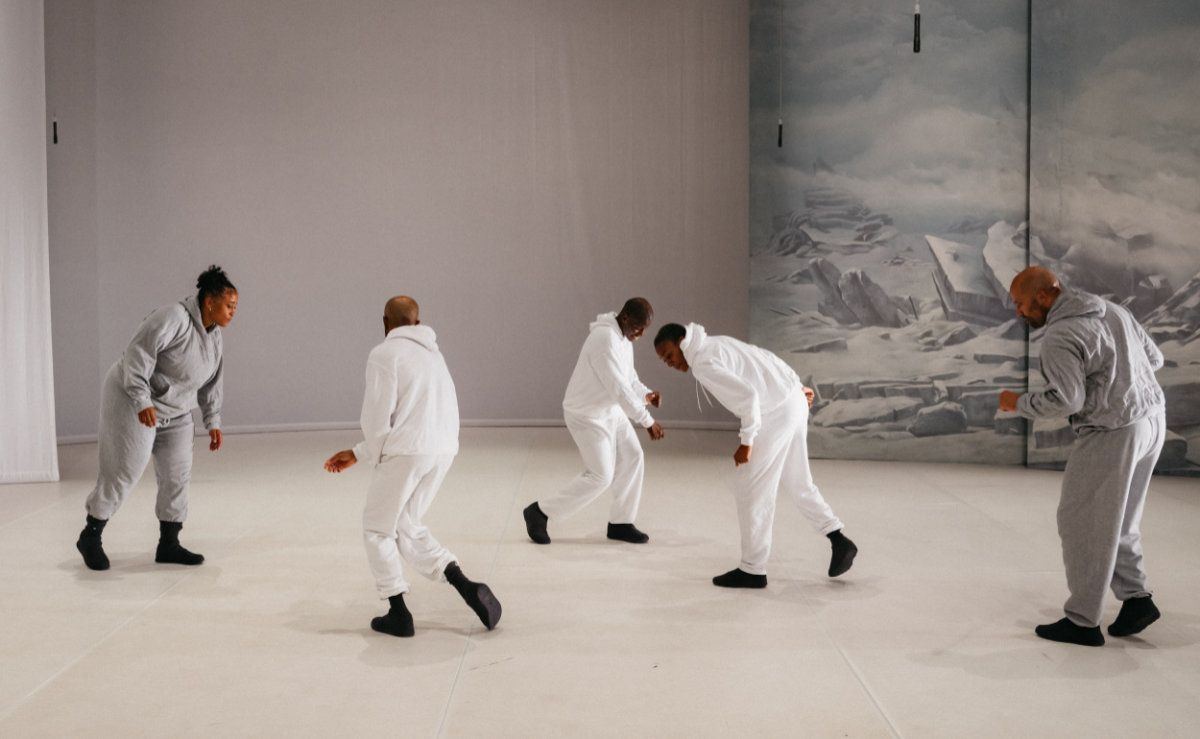Jeremy Nedd’s from rock to rock
Jeremy Nedd and his dancers have just made their London debut in from rock to rock - a deep dive into all things Milly Rock, the viral dance created by rapper 2 Milly…
 Jeremy Nedd’s ‘from rock to rock… aka how magnolia was taken for granite’. © Philip Frowein.
Jeremy Nedd’s ‘from rock to rock… aka how magnolia was taken for granite’. © Philip Frowein.
Jeremy Nedd
from rock to rock
(full title: from rock to rock… aka how magnolia was taken for granite)
★★✰✰✰
London, Queen Elizabeth Hall, Southbank Centre
23 July 2025
www.jeremynedd.com
www.southbankcentre.co.uk
Part of the Dance Your Way Home season
For the next 5+ weeks, the Southbank Centre’s Dance Your Way Home season presents a huge mix of nearly 40 events spread across spaces from the Riverside Terrace and smaller stages up to the Royal Festival Hall. ‘Inspired by the stories and spirit of Emma Warren’s book of the same name, Dance Your Way Home is a celebration of the dance floors that have brought people together.’ It’s an ambitious multi-artform programme, and there really ought to be something for everyone in there - I think the Southbank programmers would be mortified if there wasn’t!
Opening the season is Basel-based Jeremy Nedd, making his debut in London with from rock to rock — a work that explores the Milly Rock, a dance move inspired by the rapper 2 Milly. The Milly Rock has come to particular prominence because of a legal dispute between 2 Milly and Epic Games after their Fortnite game used the moves without reference, payment or respect. Brooklyn-born Nedd has been inspired to take the grand sweep around Milly, exploring not just skits and plays on the steps themselves, but also the issues around dance moves copyright and (in interview) “What does it mean to have a billion dollar video game company be able to capitalize off of something that comes from a black space of creativity?”.
These are complex issues, and we all know that dance can often struggle to communicate complexity. In tackling the Milly, Nedd and his four other dancers use a wide variety of tactics over the work’s 1¼ hours, some more successful than others. The set itself is something of a conundrum, with a small rock suspended on a chain high up on a painted backcloth of glacial scenes and a large rock offset to one side at the front of the stage — a bit of laboured playfulness.
Sadly, the night starts badly, with the five dancers appearing as if a huge tumbleweed that slowly rolls from stage left to stage right over 5 long minutes. Perhaps a better metaphor might be that it is a rock being swept along by a glacier? Whatever it is, it feels dull rather than absorbing. Then, at last, on the signal of a thunderclap, the five hoodie-clad dancers give us the basic Milly Rock moves — it’s such a simple and loose movement, with the dancers slowly shuffling into lines and ad hoc groups. The constant repetition is rather hypnotic, and you start to notice slight variations in the timing of each dancer’s movement. But again, the slow locomotion around the stage goes on rather too long. The best of the action is when the music morphs to a jazzy track, and it’s as if the dancers, all of whom are fine movers, give themselves permission to just playfully noodle and enjoy a rest away from the strictness of the hardcore Milly. I’d really like to see more of that — way more.
There is a lot of the surreal in from rock to rock — notably when a helmeted Stig-like character cruises around the stage on a hoverboard. Elsewhere, a dancer slowly and noisily wanders around with huge boots made of rock. Perhaps they’re references to the virtual games world and the way ideas are raided from here, there and everywhere and morphed into a strange and different reality? Or perhaps I’m just clutching at straws? The set’s glacial overtones permeate much of the action, which very slowly evolves as dancers Milly gradually on and off stage behind its white backcloth.
One of the dancers, Brandy Butler, like Nedd, originally from the USA and now based in Switzerland, is also a singer and musician (and actress to boot), and her vocals emerge a couple of times to lift proceedings a tad. By the end, she extemporises on a Hammond-style organ as dancer Zen Jefferson, in an ill-fitting white wig, lengthily mutters away while standing atop the heavy rock boots. Some in the audience could make out what he said and tittered occasionally, but I couldn’t hear enough of what sounded like a bit of a southern preacher tirade at times. And just to lift things, the rock at the front turned into a volcano and started erupting pink smoke. Very slowly, the lights come down to the show’s conclusion until only the blue LEDs on Stig’s hoverboard can be seen slowly circling.
The points Nedd wants to make seem laudable, but his means feel a bit too obtuse and slow in delivery. It’s a shame because the Milly Rock itself is a mesmerising bit of movement, and a work about it should really engage — it’s a viral dance after all and is not viral for nothing.